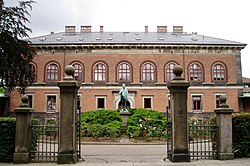This article includes a list of general references, but it lacks sufficient corresponding inline citations .(January 2013) |

The Carlsberg Research Laboratory is a private scientific research center in Copenhagen, Denmark under the Carlsberg Foundation. It was founded in 1875 by J. C. Jacobsen, the founder of the Carlsberg brewery, with the purpose of advancing biochemical knowledge, especially relating to brewing. It featured a Department of Chemistry and a Department of Physiology. In 1972, the laboratory was renamed the Carlsberg Research Center and was transferred to the brewery.